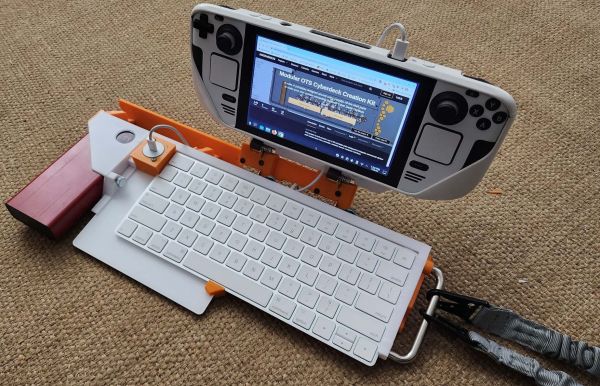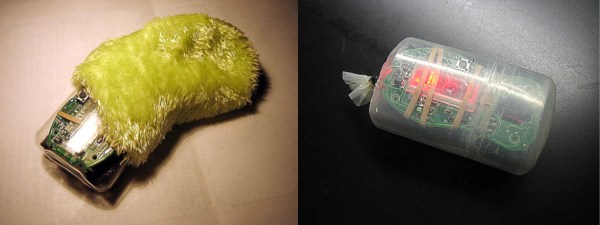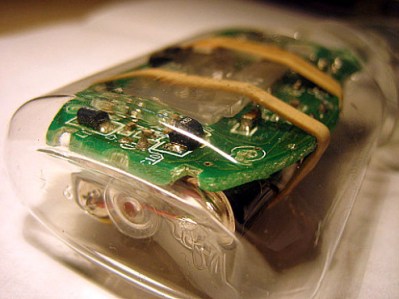We were fortunate to run into [Sp4m] at DEFCON31 and see his Modular Cyberdeck Creation Kit in person. In fact, he was wearing it around the hallways like a rogue decker in search of fellow runners. Holding the unit feels like a serious tool because of its weight, mainly from the battery. Everything hangs from a single-point sling on a metal handle, probably from the cabinetry aisle, and we could move silently and comfortably. The sling is firearm-rated, which is appropriate since he has a printed Weaver rail on top. It just needs a flashlight/laser combo.
[Sp4m] aims to create printable parts that combine any on-hand materials into a usable cyberdeck. In this iteration, he uses a wired Apple keyboard and trackpad he found in the trash, so we have to assume he works in IT. Most of the trackpad is covered, but enough is accessible to scroll and maneuver the mouse, saving almost six inches. The Steam deck is the current head but is removable so that this hardware collection can work for many USB-C tablets without fuss.
The eye-catching white/orange is no accident and may earn it a top spot in the Icebreaker category of the 2023 Cyberdeck Contest. The judges are currently deliberating, so keep an eye out for an announcement about the winners shortly.
















